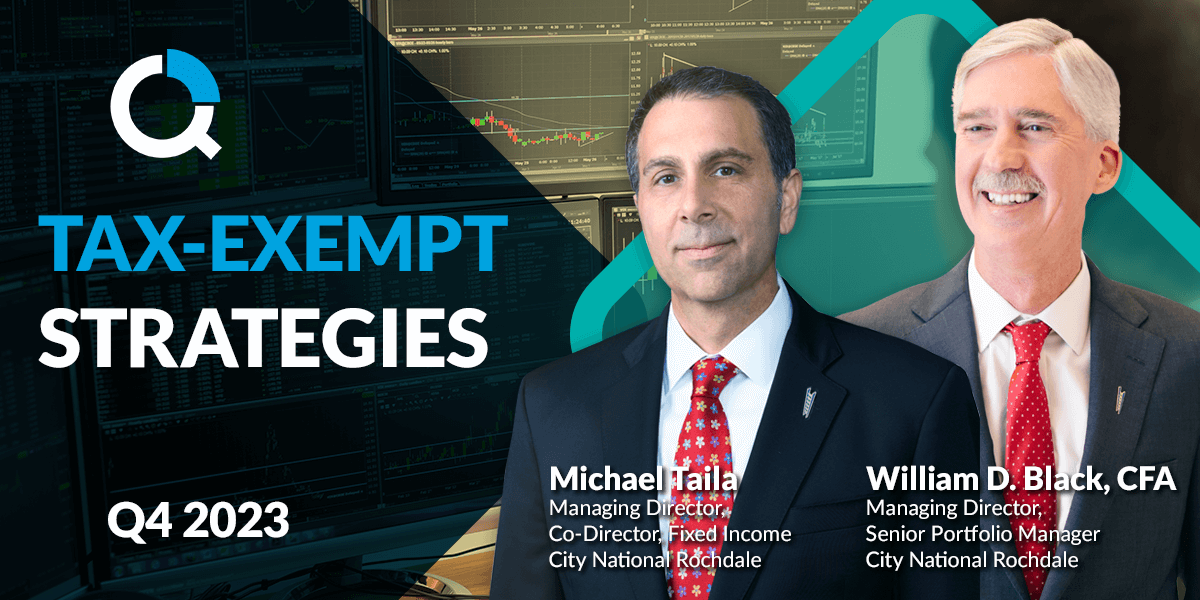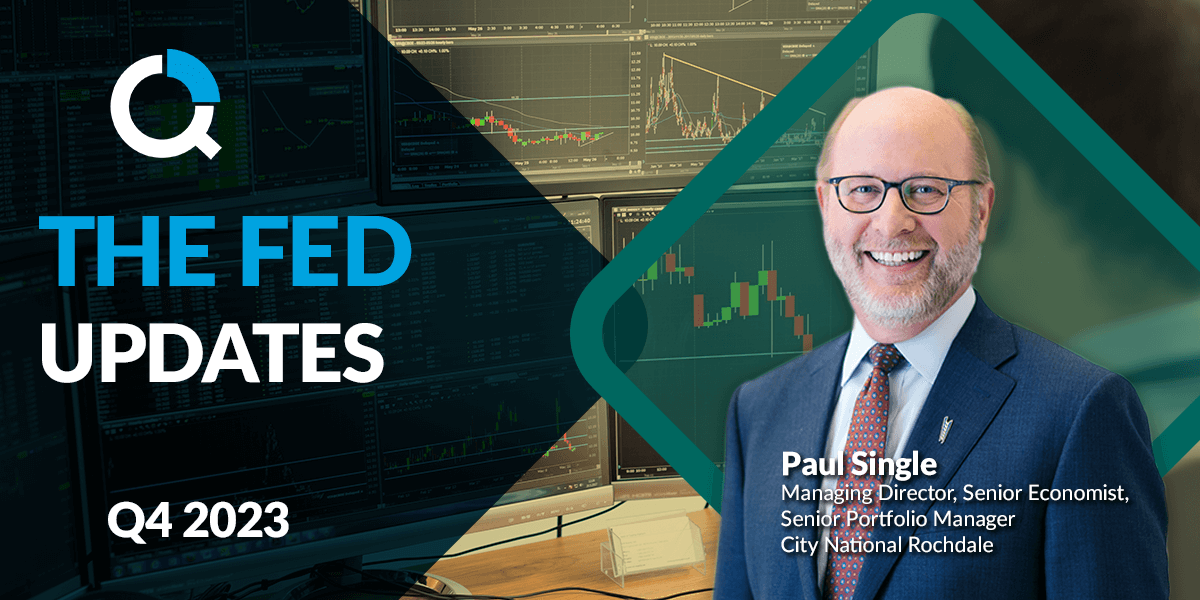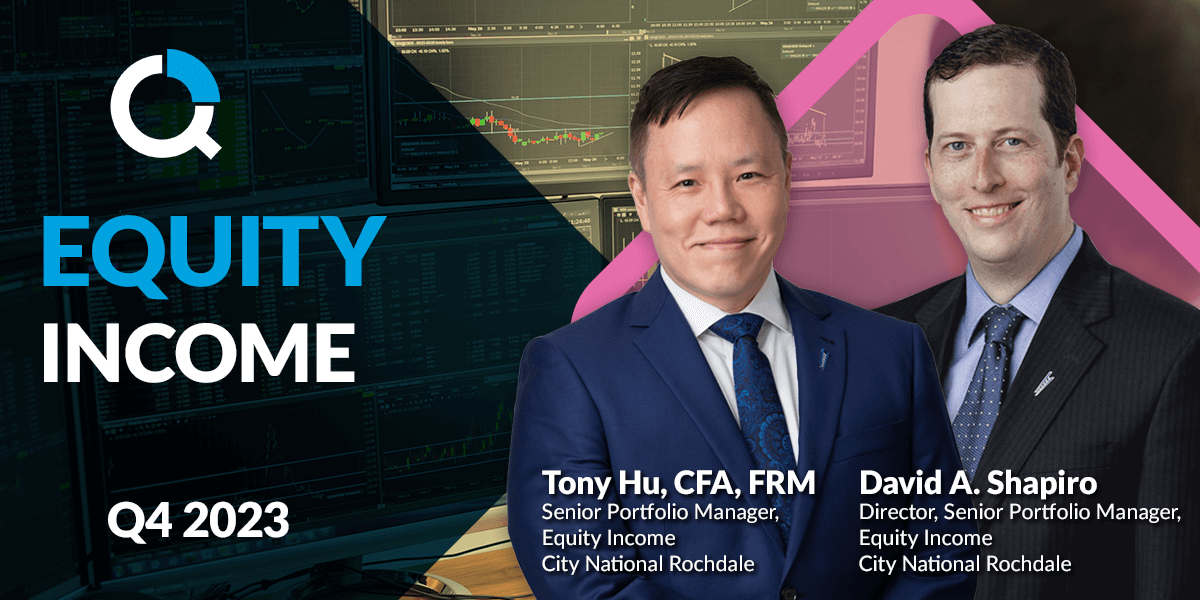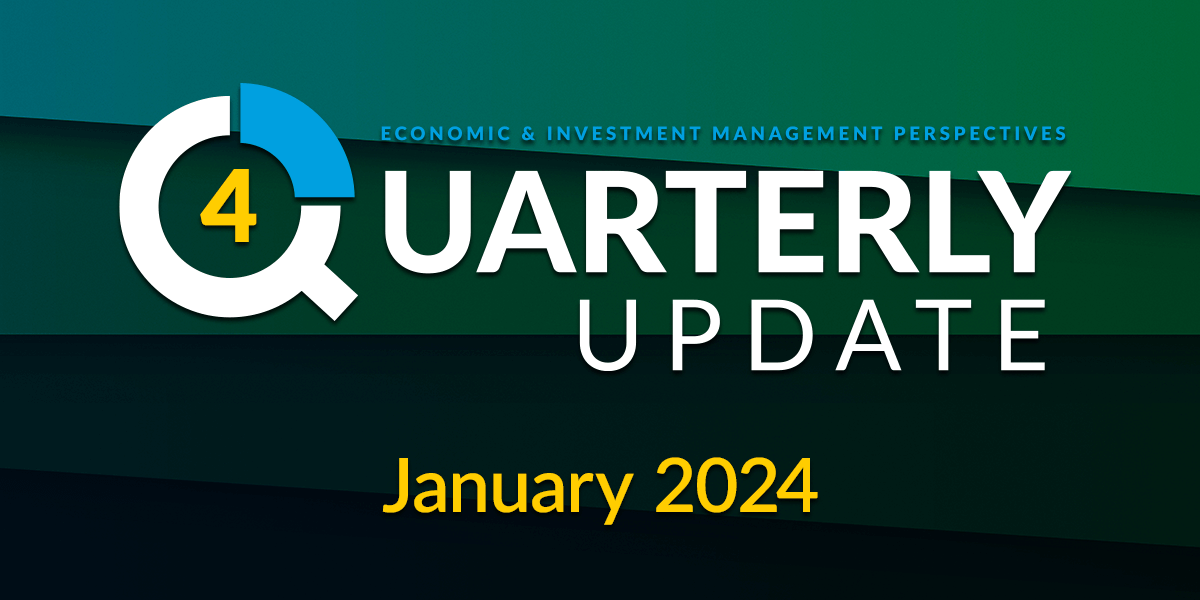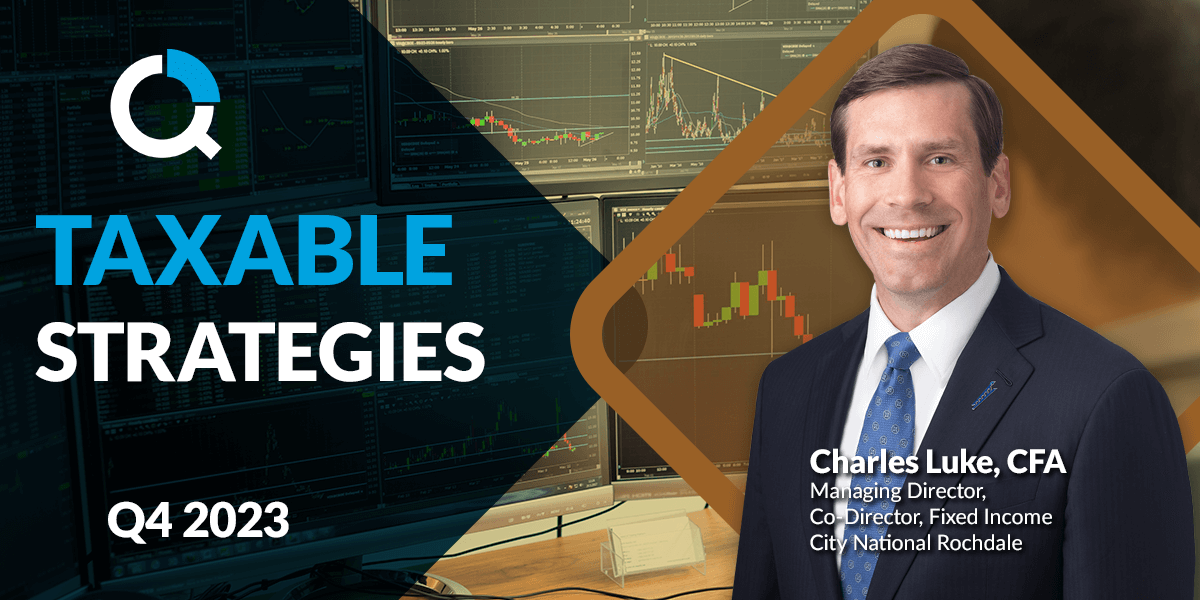
Challenges to Overcome in the First Half 2023; Thinking Optimistically Longer Term
Key Points
- Better returns for stocks and bonds expected in 2023
- Near-term recession expected, but likely mild
- US economy continues to be best positioned globally
Several key forward-looking indicators are flashing recession signals for the US economy in the first half of 2023. We have set our investment strategy and asset allocation for clients to reflect our near-term cautious outlook by underweighting risky asset classes, like growth equities, and overweighting less risky asset classes, like income-producing, fixed-income investments. Our recession forecast calls for a mild downturn, which means that GDP will decline less than normal and only for a few quarters before the economy begins to recover. Because financial markets usually anticipate this, we think the stage should be set for a rise in stock and bond values later this year and leading into 2024.
The primary reasons for our mild recession outlook pertain to our view of the consumer, who represents approximately 68% of overall economic activity. When consumers have good financial resiliency, as they do today, history shows that recessions tend to be shorter and milder. In evaluating consumer financial health, the labor market outlook while trending downward is still quite solid. Despite unemployment at a 50-year low of 3.5%, millions of jobs remain unfilled, forcing businesses to continue to hire and raise wages even as economic growth slows. Should a recession occur, we think these ongoing labor shortages will limit a rise in the unemployment rate to only 4.5%–5%. By historical standards, this should not cause a meaningful retrenchment in consumer activity because roughly 95% of all those wanting to work will still be employed.
We believe our focus on holding high-quality US stocks and bonds through this turbulent period gives us the best opportunity for achieving your individual goals. In our assessment, the US continues to rank as the world’s primary economic region, with the most resilience and long-term promise for investors.
There are two dominant forces that drive an economy forward and ultimately support corporate profit growth. The first is demographics — countries with slowing or shrinking working-age populations historically have little ability to grow. The second main driver is an economy’s capacity for productivity and innovation. As the accompanying charts show, when compared with other major economies, the US outlook for labor force growth and productivity is likely to be among the best globally in the years ahead.
The year 2022 was a disappointing one for stock and bond investors, and there are likely to be further challenges to overcome in the months ahead.
However, as we move through 2023, we expect more positive economic and corporate earnings trends to develop that should favor a recovery in both stocks and bonds. Although we can’t know exactly when the current turbulence will end, we believe adhering to your long-term investment strategy, while being flexible during volatile times, will be an optimal approach to achieving your goals.
Important Disclosures
Important Information
Any opinions, projections, forecasts and forward-looking statements presented herein are valid as of the date of this document and are subject to change.
The information presented does not involve the rendering of personalized investment, financial, legal or tax advice. This presentation is not an offer to buy or sell, or a solicitation of any offer to buy or sell any of the securities mentioned herein.
Certain statements contained herein may constitute projections, forecasts and other forward-looking statements, which do not reflect actual results and are based primarily upon a hypothetical set of assumptions applied to certain historical financial information. Certain information has been provided by third-party sources and, although believed to be reliable, it has not been independently verified and its accuracy or completeness cannot be guaranteed.
Concentrating assets in a particular industry, sector of the economy, or markets may increase volatility because the investment will be more susceptible to the impact of market, economic, regulatory, and other factors affecting that industry or sector compared with a more broadly diversified asset allocation.
Private investments often engage in leveraging and other speculative investment practices that may increase the risk of investment loss, can be highly illiquid, are not required to provide periodic pricing or valuation information to investors, and may involve complex tax structures and delays in distributing important tax information.
Alternative investments are speculative, entail substantial risks, offer limited or no liquidity, and are not suitable for all investors. These investments have limited transparency to the funds’ investments and may involve leverage which magnifies both losses and gains, including the risk of loss of the entire investment. Alternative investments have varying and lengthy lockup provisions. Please see the Offering Memorandum for more complete information regarding the Fund’s investment objectives, risks, fees and other expenses.
Investments in below-investment-grade debt securities, which are usually called “high-yield” or “junk bonds,” are typically in weaker financial health and such securities can be harder to value and sell, and their prices can be more volatile than more highly rated securities. While these securities generally have higher rates of interest, they also involve greater risk of default than do securities of a higher-quality rating.
There are inherent risks with equity investing. These risks include, but are not limited to, stock market, manager or investment style. Stock markets tend to move in cycles, with periods of rising prices and periods of falling prices. Investing in international markets carries risks such as currency fluctuation, regulatory risks, and economic and political instability. Emerging markets involve heightened risks related to the same factors, as well as increased volatility, lower trading volume and less liquidity. Emerging markets can have greater custodial and operational risks and less developed legal and accounting systems than developed markets.
There are inherent risks with fixed-income investing. These risks may include interest rate, call, credit, market, inflation, government policy, liquidity or junk bond. When interest rates rise, bond prices fall. This risk is heightened with investments in longer-duration fixed-income securities and during periods when prevailing interest rates are low or negative. The yields and market values of municipal securities may be more affected by changes in tax rates and policies than similar income-bearing taxable securities. Certain investors’ incomes may be subject to the Federal Alternative Minimum Tax (AMT), and taxable gains are also possible. Investments in below-investment-grade debt securities, which are usually called “high yield” or “junk bonds,” are typically in weaker financial health and such securities can be harder to value and sell, and their prices can be more volatile than more highly rated securities. While these securities generally have higher rates of interest, they also involve greater risk of default than do securities of a higher-quality rating.
All investing is subject to risk, including the possible loss of the money you invest. As with any investment strategy, there is no guarantee that investment objectives will be met, and investors may lose money. Diversification does not ensure a profit or protect against a loss in a declining market. Past performance is no guarantee of future performance.
Indices are unmanaged, and one cannot invest directly in an index. Index returns do not reflect a deduction for fees or expenses.
Alternative investments are speculative, entail substantial risks, offer limited or no liquidity and are not suitable for all investors. These investments have limited transparency to the funds’ investments and may involve leverage which magnifies both losses and gains, including the risk of loss of the entire investment. Alternative investments have varying and lengthy lockup provisions.
This material is available to advisory and sub-advised clients, as well as financial professionals working with City National Rochdale, a registered investment advisor and a wholly-owned subsidiary of City National Bank. City National Bank provides investment management services through its sub-advisory relationship with City National Rochdale.
Index Defintions
S&P 500 Index: The S&P 500 Index, or Standard & Poor’s 500 Index, is a market-capitalization-weighted index of 500 leading publicly traded companies in the U.S. It is not an exact list of the top 500 U.S. companies by market cap because there are other criteria that the index includes.
Bloomberg Barclays US Aggregate Bond Index (LBUSTRUU): The Bloomberg Aggregate Bond Index or “the Agg” is a broad-based fixed-income index used by bond traders and the managers of mutual funds and exchange-traded funds (ETFs) as a benchmark to measure their relative performance.
GT2 Govt, GT3 Govt, GT5 Govt, GT10 Govt, GT30 Govt: US Government Treasury Yields
DXY Index: The U.S. dollar index (USDX) is a measure of the value of the U.S. dollar relative to the value of a basket of curren-cies of the majority of the U.S.’s most significant trading partners.
Dow Jones U.S. Select Dividend Index (DJDVP): The Dow Jones U.S. Select Dividend Index looks to target 100 dividend-paying stocks screened for factors that include the dividend growth rate, the dividend payout ratio and the trading volume. The components are then weighted by the dividend yield.
P/E Ratio: The price-to-earnings ratio (P/E ratio) is the ratio for valuing a company that measures its current share price relative to its earnings per share (EPS).
The Commodity Research Bureau (CRB) Index acts as a representative indicator of today’s global commodity markets. It measures the aggregated price direction of various commodity sectors.
The MSCI indexes are market cap-weighted indexes, which means stocks are weighted according to their market capitalization — calculated as stock price multiplied by the total number of shares outstanding.
Quality Ranking: City National Rochdale Proprietary Quality Ran king is the weighted a verage sum of securities held in
the strategy versus the S&P 500 at the sector le vel using the below formula.
City National Rochdale Proprietary Quality Ranking formula: 40% Dupont Quality (return on equity adjusted b y debt levels), 15% Earnings Stability (v olatility of earnings), 15% Re venue Stability (volatility of revenue), 15% Cash Earnings Quality (cash flow vs. net income of compan y) 15% Balance Sheet Quality (fundamental strength of balance s heet).
*Source: City National Rochdale proprietary r anking system utilizing MSCI and FactSet data. **Rank is a perc entile
ranking approach whereby 100 is the highest possible score and 1 is the lowest. The Ci ty National Rochdale Core compares the weighted average holdings of the str ategy to the companies in the S&P 500 on a sector basis. As of September 30, 2022. City National Rochdale proprietary ranking system utilizing MSCI and FactSet data.
Rank is a percentile ranking approach whereby 100 is the highest possible score and 1 is the lowest. The City National Rochdale Core compares the weighted average holdings of the strategy to the companies in the S&P 500 on a sector basis. As of June 2022.
Bloomberg Barclays US Aggregate Bond Index: The Bloomberg Aggregate Bond Index or “the Agg” is a broad-based fixed-income index used by bond traders and the managers of mutual funds and exchange-traded funds (ETFs) as a benchmark to measure their relative performance.
The Case-Shiller Index, formally known as the S&P CoreLogic Case-Shiller U.S. National Home Price NSA Index, is an economic indicator that measures the change in value of U.S. single-family homes on a monthly basis.
Non-deposit investment Products are: • not FDIC insured • not Bank guaranteed • may lose value
Stay Informed.
Get our Insights delivered straight to your inbox.
More from the Quarterly Update
Put our insights to work for you.
If you have a client with more than $1 million in investable assets and want to find out about the benefits of our intelligently personalized portfolio management, speak with an investment consultant near you today.
If you’re a high-net-worth client who's interested in adding an experienced investment manager to your financial team, learn more about working with us here.

